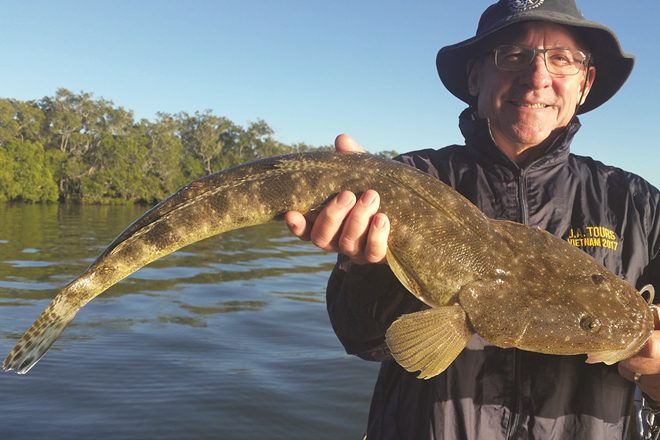WOW, what a difference a drop in temperature makes.
After having a pretty ordinary summer where we didn’t get out very much, the fish have definitely come on the chew in the cooler weather. We have seen good size bream, tailor, small school mackerel and flathead biting well. I think we could be in for a great winter if the temperatures keep dropping over the coming month and the weather patterns become a bit more stable.
The standout species for me is flathead. Plenty are around and they are quite willing to take either cast soft plastics or trolled hard-bodies. They are great sportfish on light tackle, and if you want to take one home for the table, they are great to eat as well.
I’ve been working a rather large area for these fish and no matter where I’ve been, I have found flathead. That tells me either we could be in for quite a good flatty season or it could just be an early season. Only time will tell.
The numbers are certainly there and we’ve been fishing for them on high tides around the mangrove lines and then on low tides around the edges of drop-offs and drains. They’ve been caught by casting soft plastics and trolling hard-bodies. We have even hooked flathead on banana prawns as long as the stingrays, pike eels and other vermin don’t get the bait first.
We have used 2-4kg rods with 2500-size spin reels spooled with 6-8lb line to handle the flathead. I’ve had a few fishers come on the boat with their own 2-4kg rods that have a softer action than our boat’s rods and I’ve noticed the softer rods do not impart quite enough action on the plastic, hence those anglers catch fewer fish. So if you are looking for a rod for flathead, I’d suggest a 2-4kg stick with a medium action. The stiffer tip helps if throwing 1/4oz jig heads too.
On the other hand, the 2-4kg rods with a softer action are perfect for trolling little hard-body lures for flathead.
When you’ve got the force of the boat moving forward and the fish hitting the lure going the other way, the softer rod tip gives a little more and helps absorb the pressure of the fish hitting the lure to prevent pulling hooks. The softer tip also allows you to see and feel the lure’s action to make sure it’s swimming correctly.
Something I’ve changed in my time of plastic fishing for flathead and other species in Moreton Bay is using different size jig heads with different types of lures. This is only my point of view and not everybody may agree with this. So here we go, let’s see if I can explain this in print.
I find soft plastics made of a softer material are more effective with a lighter jig head such as a 1/6oz or 1/8oz. These plastics are great for the more subtle finesse approach of an early morning and when there’s no breeze to contend with. Making long casts with light 4-6lb braid, the lure flutters to the bottom and because it’s softer you can make a gentler lift and don’t have to rip it as hard to get the action you want out of the plastic.
The lures made from stiffer plastic are often more buoyant and with these plastics I’ll use a 1/4oz to 3/8oz jig head. This can be advantageous if we have to contend with the breeze.
Additionally, you may have a mate who can’t cast as far as he or she needs to, and by giving your mate that different plastic with a bigger jig head, suddenly that angler can get a bit more distance to land in the strike zone. And by fitting a stiffer plastic with a bigger jig head it will sink faster and therefore you’ll get a bit more action out of it on the sink.
Then when you make your lifts, rip the rod a little harder to put more action into the tail of the lure. This is why I feel you need those two different types of plastics in your tackle box. Believe me, I have found all these little things can make a really big difference.
It’s definitely flathead season right now, so if you want an in-depth tutorial on how to target flathead to catch more of them more often, I am running tuition nights at Redland Bay as well as tuition days on the water to show you how.
If you’d like to join me on a charter, give me a call on 0433 732 310, check out the Moreton Bay Charters Facebook page or visit moretonbaycharters.com.au
Until next month, stay safe on the water.

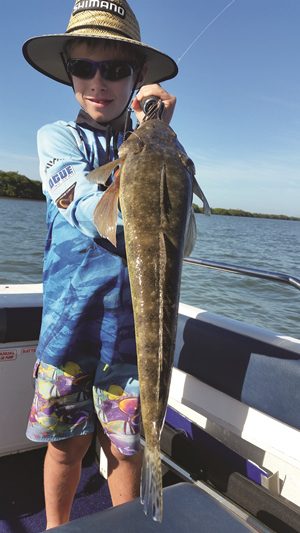
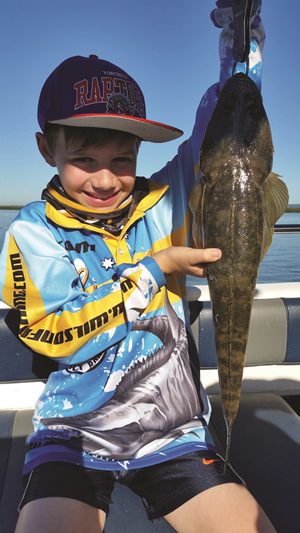
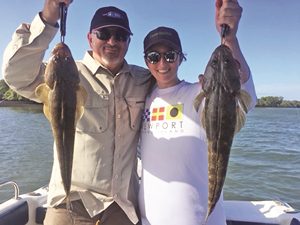
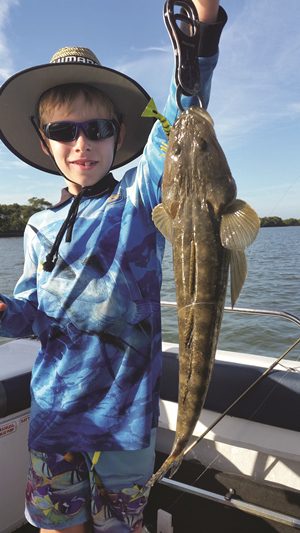
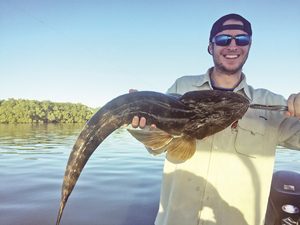
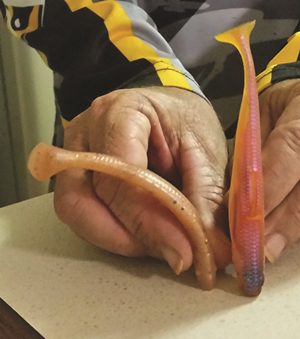
 Bush ‘n Beach Fishing Magazine Location reports & tips for fishing, boating, camping, kayaking, 4WDing in Queensland and Northern NSW
Bush ‘n Beach Fishing Magazine Location reports & tips for fishing, boating, camping, kayaking, 4WDing in Queensland and Northern NSW

